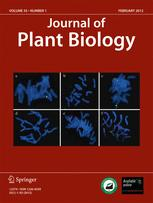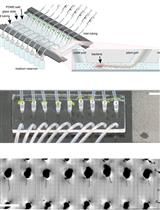- EN - English
- CN - 中文
The Use of a Dexamethasone-inducible System to Synchronize Xa21 Expression to Study Rice Immunity
使用地塞米松诱导系统同步Xa21表达进行水稻免疫研究
发布: 2015年05月05日第5卷第9期 DOI: 10.21769/BioProtoc.1468 浏览次数: 13571
评审: Fanglian HeAnonymous reviewer(s)
Abstract
Inducible gene expression systems offer researchers the opportunity to synchronize target gene expression at particular developmental stages and in particular tissues. The glucocorticoid receptor (GR), a vertebrate steroid receptor, has been well adopted for this purpose in plants. To generate steroid-inducible plants, a construct of GAL4-binding domain-VP16 activation domain-GR fusion (GVG) with the target gene under the control of upstream activation sequence (UAS) has been developed and extensively used in plant research.
Immune receptors perceive conserved molecular patterns secreted by pathogens and initiate robust immune responses. The rice immune receptor, XA21, recognizes a molecular pattern highly conserved in all sequenced genomes of Xanthomonas, and confers robust resistance to X. oryzae pv. oryzae (Xoo). However, identifying genes downstream of XA21 has been hindered because of the restrained lesion and thus limited defense response region in the plants expressing Xa21. Inducible expression allows for a synchronized immune response across a large amount of rice tissue, well suited for studying XA21-mediated immunity by genome-wide approaches such as transcriptomics and proteomics. In this protocol, we describe the use of this GVG system to synchronize Xa21 expression.
Materials and Reagents
- Wild-type rice seeds (Oryza sativa ssp. japonica cv. Kitaake)
- Transgenic rice seeds containing pTA7002::Myc::Xa21 (Park et al., 2012)
- Transgenic rice seeds containing Ubi::Myc::Xa21 (Park et al., 2010)
- Xanthomonas oryzae pv. oryzae (Xoo; Philippines race 6, strain PXO99Az)
- Dexamethasone (Sigma-Aldrich, catalog number: D1756 )
- Dimethyl sulfoxide (DMSO) (Thermo Fisher Scientific, catalog number: D128-1 )
- Tween-20 (Bio-Rad Laboratories, catalog number: 170-6531 )
- Sterile H2O (Milli-Q)
- TRIzol (Life Technologies, InvitrogenTM, catalog number: 15596-026 )
- M-MLV reverse transcriptase (Life Technologies, InvitrogenTM, catalog number: 28025-013 )
- SsoFastEvaGreenSupermix (Bio-Rad Laboratories, catalog number: 172-5203 )
- Peptone sucrose agar (PSA) solid media containing 20 µg/ml cephalexin (MP Biomedicals, catalog number: 02150585 ) (see Recipes)
- Dexamethasone (see Recipes)
- Greenhouse rice growing conditions (see Recipes)
- Walk-in growth chamber rice growing conditions (see Recipes)
Equipment
- Spray bottle (550 ml) (any supplier) for dexamethasone foliar spray
- 1.5 ml Eppendorf tube (any supplier)
- Surgical scissors (sharp/sharp, straight, 5 ½ inch or similar) for Xoo clipping inoculation
- 5 ½ inch square disposable pots
- Supertub (24 inch x 36 inch x 8 inch) (Mac Court Products, model: ST3608 or similar)
- Scale suitable for measurements down to 0.0001 g (any manufacturer)
- Spectrophotometer suitable for taking optical density measurements at 600 nm (any manufacturer)
- Growth chamber (14 h light and 10 h dark photoperiod with 28 °C temperature) (any manufacturer) for rice seed germination
- Incubation chamber (28 °C) (any manufacturer) for Xoo preparation
- Greenhouse capable of temperature and humidity control for growing rice plants
- Walk-in growth chamber (conviron or equivalent) for Xoo inoculation and dexamethasone treatment
- qPCR machine (Bio-Rad Laboratories, model: CFX96 Real-Time PCR )
Procedure
文章信息
版权信息
© 2015 The Authors; exclusive licensee Bio-protocol LLC.
如何引用
Caddell, D. F., Wei, T., Park, C. and Ronald, P. C. (2015). The Use of a Dexamethasone-inducible System to Synchronize Xa21 Expression to Study Rice Immunity. Bio-protocol 5(9): e1468. DOI: 10.21769/BioProtoc.1468.
分类
植物科学 > 植物免疫 > 信号感知与传递
植物科学 > 植物免疫 > 病害生物测定
微生物学 > 微生物-宿主相互作用 > 体内实验模型 > 植物
您对这篇实验方法有问题吗?
在此处发布您的问题,我们将邀请本文作者来回答。同时,我们会将您的问题发布到Bio-protocol Exchange,以便寻求社区成员的帮助。
Share
Bluesky
X
Copy link













